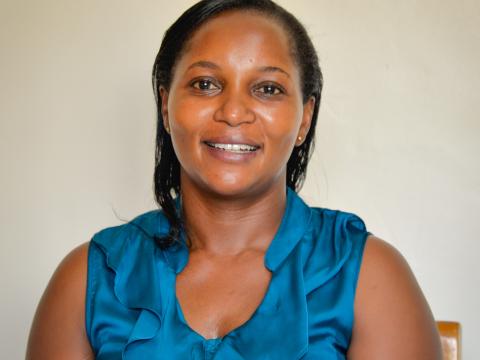Sustainable Development is an inevitable trend in humanitarian programming

By Mary Njeri
As more humanitarian crises around the world become protracted and as the integration of refugees into host communities become more imbedded, humanitarian actors today are called upon to marry relief, development, and peacebuilding initiatives to achieve effective programming and service delivery. This innovative approach is known as the humanitarian nexus.
As the number of refugees and displaced persons across the world soared to an all-time high this year (100 million people), humanitarian agencies must shift their programming in order to respond to multiple needs of vulnerable children, families and communities and support them to achieve their long-term aspirations. This also includes efforts to foster social cohesion among and between households and communities.
This shift from focusing only on immediate humanitarian needs, to addressing root causes of suffering and migration helps to support transformative change by building resilient communities in the long run. Interventions such as promoting access to education, improving access to clean water, building and maintaining of health centres, livelihoods and small businesses, and peace and coexistence between refugee and host communities are key in achieving the humanitarian nexus. Aid agencies like World Vision have been at the forefront of implementing the nexus model in the Uganda refugee response, in West Nile. The organization’s latest intervention is implemented through the child sponsorship model in Terego district where over 2,902 children from both refugee and host communities have benefited.
Important policy commitments to refugees have been made in the past few years, driving greater coordinated and comprehensive short and long-term responses to what is widely recognised as a global refugee crisis, and among them is the Comprehensive Refugee Response Framework (CRRF). The CRRF includes a commitment to foster self-reliance and resilience among refugee populations and host communities ‘to enable them to make the best use of their skills and capacities and to invest in building human capital.’ The humanitarian-development-peace nexus has emerged as a promising approach to support this objective. It aims to facilitate better joined-up efforts between humanitarian, development, and peacebuilding action in fragile contexts, with the goal of achieving more meaningful progress for the world’s most vulnerable people.
World Vision has identified key enablers for development to be successful, and these include; strengthening social capital within communities, between communities, and with local service providers to improve livelihoods, resilience to shocks, and community well-being; contributing to local economic development and financial inclusion of refugees and host communities to increase livelihood options for refugees and hosts; investing in education as an important strategy for reducing individual risks for children- a critical contribution to achieving the government of Uganda’s national development goals.
Other key enablers include linking social safety net transfers with long-term development activities; combining humanitarian cash transfers with livelihood interventions to provide a viable way to support the most vulnerable households rebuild their lives and livelihoods, adapting development livelihood and child protection interventions to a refugee context. This enables communities to meet their needs and aspirations in the long term, contributing towards building their resilience and social capital.
Based on our more than 70 years of experience working in fragile contexts, World Vision aligns its development, peacebuilding, and advocacy efforts towards addressing fragility and extending the organization’s impact. This includes making a sustainable difference in the lives of the most vulnerable girls and boys.
The writer is the Uganda Refugee Response Director.